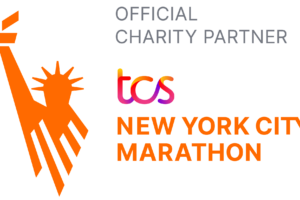DVT/PE Awareness Among At-Risk THA/TKA Patients is Low
Tarrytown, NY – May 16, 2011 – Therapeutic barriers perceived by THA/TKA surgeons impact their use of anticoagulation therapies in the prevention of deep vein thrombosis (DVT) and pulmonary embolism (PE) among THA/TKA patients, and, despite evidence-based guidelines, DVT/PE prophylaxis practices vary widely, according to new survey results being unveiled by the National Blood Clot Alliance (NBCA) at the National Association of Orthopedic Nurses Annual Congress in Baltimore this week.
Data from NBCA’s online survey of 200 U.S. surgeons who perform total hip arthroplasty (THA) and/or total knee arthroplasty (TKA), show that, on average, 38% of surgeons surveyed actually refrain from prescribing warfarin, and 29% refrain from prescribing low molecular weight heparin (LMWH), due to perceived barriers associated with these therapies. In addition, these data also show that, on average, treatment barriers cause 18% of surgeons surveyed to shorten warfarin treatment time, and 16% to shorten LMWH treatment time. The primary treatment barriers cited by surgeons included, for warfarin, INR monitoring, bleeding, and drug interactions, and, for LMWH, bleeding and patient difficulty with injections.
Despite the existence of evidence-based guidelines, DVT/PE prophylaxis practices reported by THA/TKA surgeons participating in NBCA’s survey vary widely: 70% pneumatic compression, 69% ambulation, 58% compression stockings, 47% LMWH, 28% warfarin, 15% LMWH with transition to warfarin, and 14% aspirin.
“These survey findings validate the need for interventions to address anticoagulant treatment barriers, and the need to better define optimal DVT/PE prophylaxis for THA and TKA patients to overcome longstanding therapeutic obstacles,” says NBCA Chief Executive Officer Alan P. Brownstein, MPH. “This can be accomplished with comparative effectiveness research, combined with consensus building efforts — such as a CDC/NIH Consensus Development Conference, for example — to optimize prophylaxis among at-risk THA/TKA patients.”
NBCA conducted its DVT/PE Awareness Survey in direct response to the Surgeon General’s Call to Action to Prevent Deep Vein Thrombosis and Pulmonary Embolism. The objectives of the survey included:
- Documentation of self-reported DVT/PE prophylaxis among THA/TKA surgeons
- Measurement of THA/TKA surgeon perceptions about anticoagulant treatment barriers
- Documentation of DVT/PE awareness among THA/TKA patients
- Measurement of THA/TKA patient perceptions about anticoagulation treatment barriers
Additional Awareness Findings: DVT/PE Risk Versus THA/TKA Patient Awareness
DVT is widely recognized as a major risk factor facing patients who undergo THA/TKA. Without prophylaxis, up to 80% of orthopedic surgical patients would develop DVT, and up to 20% would develop PE. DVT and subsequent PE remain the most common cause for emergency re-admission and death following joint replacement.
While 97% of surgeons surveyed said they provided DVT risk information to patients, and 80 percent of the 250 THA/TKA patients surveyed said they received information from their doctors, the survey suggests that this information was not retained. Despite being at increased risk for DVT/PE, the results of this survey demonstrate that DVT/PE awareness among THA/TKA patients is low: Just 29% of patients surveyed say they are aware of a condition called DVT, when that term is used, and just 19% are aware of a condition called PE, when that term is used. Conversely, however, most THA/TKA patients (77%) say they know what a blood clot is, and virtually all of them (97%) recognize that blood clots can be life threatening.
“The disparity between DVT/PE risk and DVT/PE awareness seen in the orthopedics patients in this survey is very troubling,” says NBCA Director Health Learning and Marketing Mary Ellen McCann, RN, MA, who is sharing key findings from the NBCA Awareness Survey at the NAON Annual Congress. “We need to sharpen our focus on educational initiatives that will resonate more effectively with THA/TKA patients, and carefully target our efforts to fill existing information gaps.”
Patient Perceived Treatment Barriers
In this study, nearly half of the 250 THA/TKA patients surveyed reported warfarin use, with 22% saying warfarin is very or moderately difficult to use, and 18% saying they needed assistance with the therapy. More than half of these warfarin users said that remembering to take the medicine, dosing changes and dietary restrictions were the primary barriers they experienced. Among all THA/TKA patients surveyed, 58% reported LMWH injection use, with 31% of these patients saying LMWH is moderately or very difficult to use. Difficulty with injections was the primary treatment barrier cited by LMWH patients.
Survey Methodology
NBCA’s DVT/PE Awareness Survey was conducted by the national survey firm USA/Direct, Inc. The THA/TKA surgeon sample consisted of 200 THA/TKA surgeons screened from an online or Internet research panel. The THA/TKA patient sample, also screened from an online research panel, consisted of 500 adults, 20+ years (mean age 54; 55% female), who had undergone THA/TKA surgery within 12 months of sampling.
NBCA is sharing additional results of its DVT/PE Awareness Survey findings at additional medical meetings in upcoming weeks and months, and through educational DVDs being made available to healthcare professionals in orthopedics nationwide. For more information, or to order free copies of the NBCA DVT/PE Awareness Survey DVD, contact NBCA at www.stoptheclot.org, or 877.4No.Clot (877-466-2568).
NBCA is a patient-led advocacy organization dedicated to promoting patient and public awareness about the signs and symptoms of DVT and PE
Additional Resources:
- NBCA DVT/PE AWARENESS SURVEY FACT SHEET
- Barriers in VTE Prevention: Impact on Therapeutic Choice and Duration – Poster
- NBCA DVT/PE Survey – Orthopedics
The NBCA DVT/PE Awareness Survey was made possible by a grant from Ortho-McNeil™, a Division of Ortho-McNeil-Janssen Pharmaceuticals, Inc.





